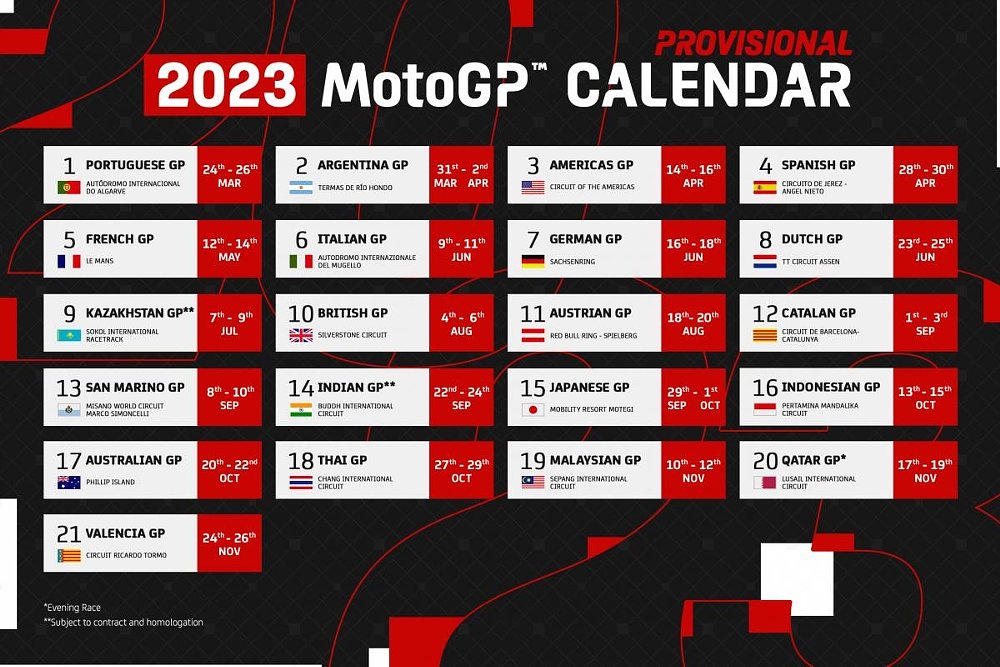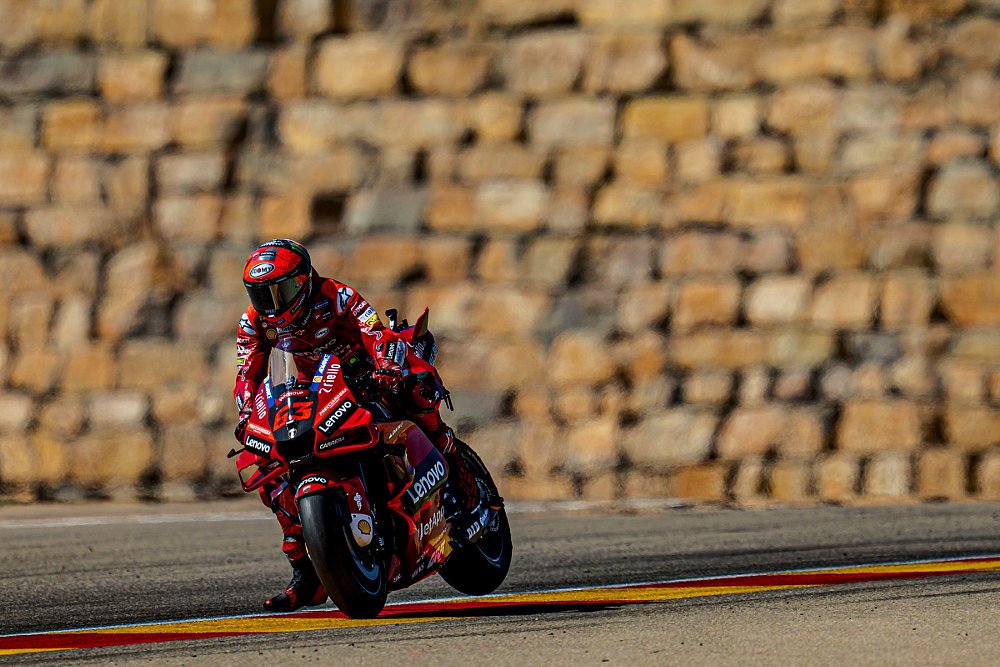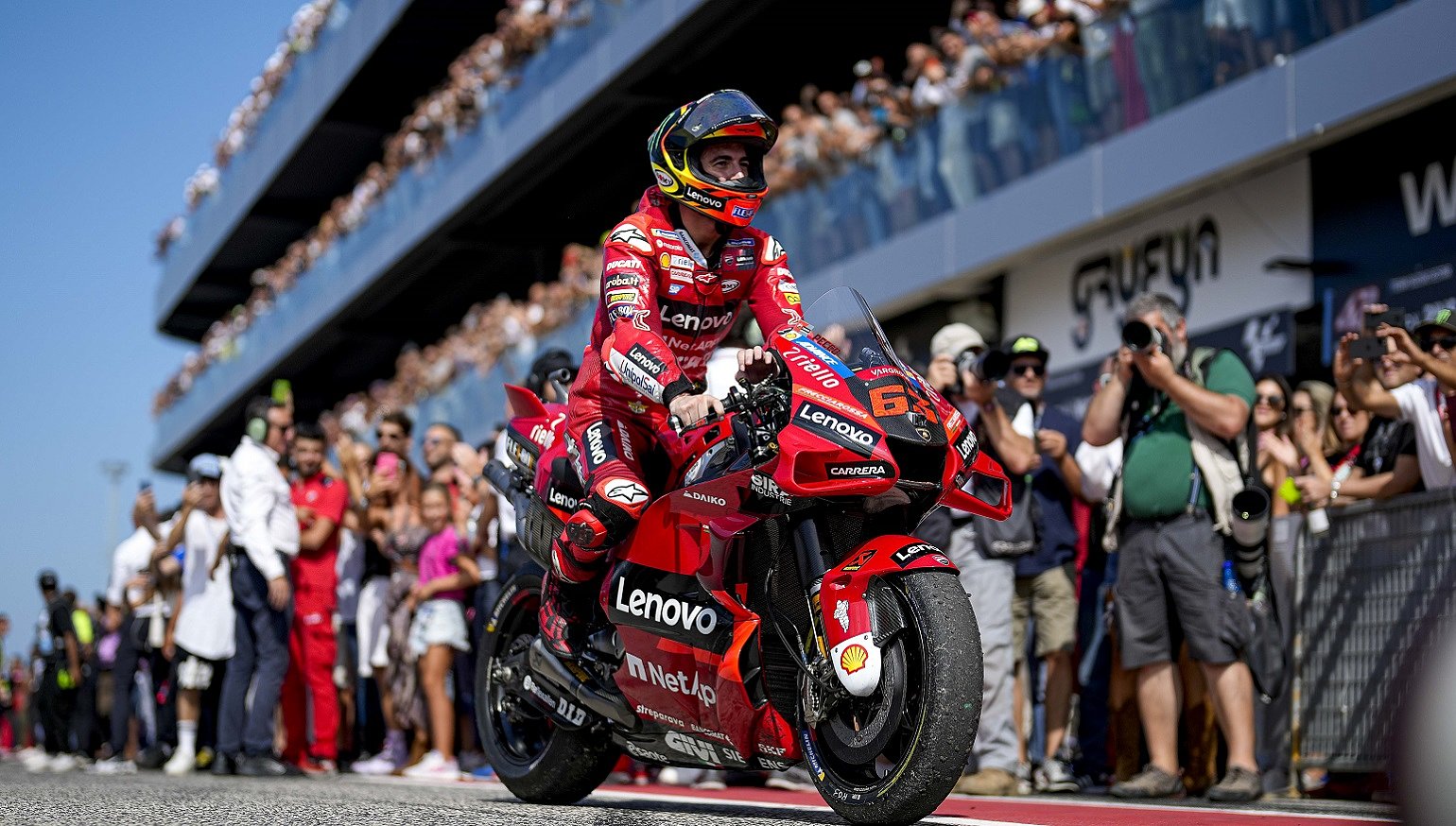MotoGP has released a provisional calendar for 2023 that expands the series to 21 rounds. Along with the announcement that the top class will have a shorter sprint race on the Saturday of each round, that means that MotoGP riders will compete 42 times next year.
Some people are questioning whether that's too much. First, let's look at the plans for next year and then try to put them into perspective.

21 rounds, 42 races, two months away from home
MotoGP organizer Dorna plans to expand the series to new countries such as India (a place swarming with motorcycles and current and potential race fans), Saudi Arabia (few motorcycles, but plenty of money to dangle in front of Dorna), and Kazakhstan (not Saudi levels of oil money, but enough to get a MotoGP race practically on the border of Russia). India and Kazakhstan are on the 2023 schedule, subject to the tracks being homologated. Saudi Arabia will presumably be added in the future when a new track being built is complete. For 2023, MotorLand Aragón drops off the schedule as the Iberian Peninsula will have to suffer through with only four MotoGP rounds instead of five. Qatar moves from its usual opening position to the penultimate round to accommodate construction going on at the track. The Red Bull GP of the Americas remains at its usual spot in April.

The latter part of the season is going to be particularly hard on teams, most of which are based in Europe. The Asian leg will begin with the new Indian Grand Prix September 22 to 24, and then continues to Japan, Indonesia, Australia, Thailand, Malaysia, and Qatar before returning to Europe for the final round at Valencia. That stretch from India to Qatar covers just a few days short of two months and some are wondering how much time team personnel will be able to spend with their families during that period.
Additionally, the last part of the season is compressed. From the Indonesian Grand Prix on October 13 to 15 through the final round at Valencia on November 24 to 26, teams will travel to six races in six different countries on three continents in seven weeks, getting just one weekend off.
The schedule will also challenge the logistical experts that get all that MotoGP gear and personnel to tracks scattered around the world. This year, even though there was a two-week gap between the Indonesia and Argentina rounds, delays by some of the cargo planes caused Friday's practice sessions to be canceled. In 2023, there will be even more back-to-back rounds on different continents.
Three triple header weekends next year are going to be absolutely punishing. Same as 2020 during COVID, except they're going to be all over the world this time not at the same track.
— Simon Patterson (@denkmit) September 30, 2022
Jeremy McWilliams, who has raced everything from a 500 cc grand prix bike to a King of the Baggers entry, and Jonathan Rea, the winningest racer in World Superbike history, also shared some thoughts about the schedule.
What a great time to be a divorce lawyer! https://t.co/8kQ9OXUDzq
— Jonathan Rea (@jonathanrea) September 30, 2022
With 21 rounds and a sprint race at each one, that means MotoGP racers will compete 42 times. That tops even Formula One, which also has season creep. There will be 24 F1 rounds but only six will have sprint races, for a total of 30 races. By comparison, if World Superbike sticks to its 12-round schedule (the 2023 calendar is now out yet), it will have 36 premier-class races, with three each weekend.
While the number of races has fluctuated over the history of the grand prix championship, season creep is definitely a 21st century phenomenon. In 1960, the world championship consisted of seven rounds; in 1970, 11; in 1980, eight rounds; in 1990, 15 rounds; in 2000, 16; in 2010, 18.
The 2022 season was supposed to be 21 rounds, but the track being built in Finland was never completed.
One other factoid. The French Grand Prix at Le Mans in May will be the 1,000th motorcycle grand prix since the sport began in the aftermath of World War II. That means it took more than 52 years to run the first 1,000 races. At the pace to be set in 2023, it will take less than 24 years to run the second 1,000.

 Membership
Membership





